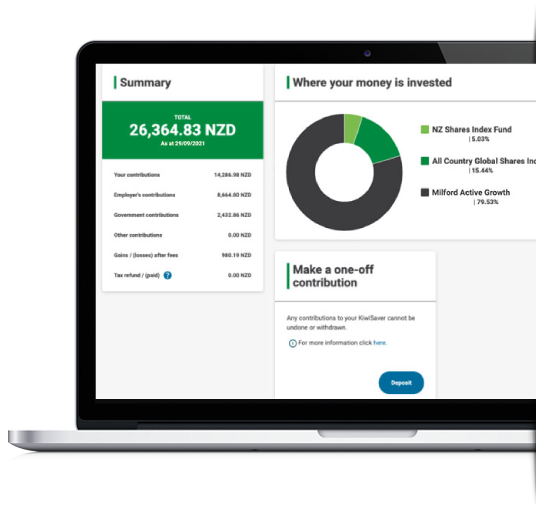

InvestNow Market Wrap-Up: June 2025
Introducing Tim Chesterfield, Director & Portfolio Manager (Castle Point) and CIO (PG Group), this month’s guest author of the InvestNow Market Wrap-Up.
The global economy continues to wrestle with significant headline challenges that include geopolitical tensions, trade disruptions, and fiscal sustainability concerns. However, despite these headwinds, cautious optimism remains, with a mid-cycle slowdown rather than a full-blown recession being the consensus. Central banks worldwide are ready to respond to economic malaise and, perhaps, shocks with interest rate adjustments, while markets adapt to shifting capital flows.
Global Markets and outlook
The US economy has demonstrated resilience amid global disruptions, with growth characterised as softer but non-recessionary. Recent economic data show a balanced picture with inflation trending lower and activity levels stabilising, however there have been signs of consumer stress resulting in lower consumption. Uncertainty over the constant policy shift has seen the USD move lower since the high earlier this year and more recently the trend has accelerated, reflecting adjustments in trade and capital flows.
Much to the frustration of the US Administration, the US Federal Reserve (Fed) has been slow to implement rate cuts given the economy remains resilient. Currently inflation appears to be stable but concerns over the inflationary nature of tariffs remain a consideration in expectations over the size and timing of cuts over the remainder of 2025.
Australia and New Zealand face the same dynamic as its trading partners, with global trade uncertainty able to shift the goal posts. Australia’s economy is rebounding, with GDP growth projected to accelerate, alongside signs of strength in the housing market and resilient consumer expenditure. Whilst slower to respond, declining interest rates are also flowing into construction activity which should provide additional support and growth. The Reserve Bank of Australia (RBA) remains cautious in its delivery of interest rate cuts with uncertainty surrounding the direction of inflation a key consideration.
New Zealand is emerging from a significant slowdown but there are green shoots and some areas of robust growth, particularly in agriculture, tempered by subdued housing and construction activity. Given economic weakness, The Reserve Bank of New Zealand (RBNZ) has been faster to lower interest rates than Australia with further cuts expected over the remainder of 2025.
Like elsewhere Europe continues to demonstrate resilience, with growth projected to remain steady despite global trade uncertainties and tariff concerns. The European Central Bank continues its cautious monetary policy, balancing modest rate cuts to stimulate growth while monitoring inflation, which hovers near target levels. Domestic demand is gradually improving, however challenges persist. Trade tensions continue to be front and centre with the US continuing to allocate tariffs without any certainty alongside continued geopolitical risk. With the weakening of the USD, the euro has gained strength as a safe-haven currency, reflecting investor confidence amid global volatility and increasingly the beneficiary of capital flows. While manufacturing faces headwinds from export slowdowns, service sectors and domestic consumption provide some offset and growth remains stable.
The Rest of the World (ROW), encompassing diverse economies like Indonesia, Vietnam, Thailand, Taiwan, and Japan, exhibited varied performance. Indonesia and Vietnam showed robust growth, driven by strong domestic demand and export sectors, despite global trade headwinds. Thailand and Taiwan maintained steady despite slower growth, while Japan stood out as the only major economy tightening monetary policy, reflecting confidence in its recovery. The broader ROW faced challenges from geopolitical influences and supply chain adjustments, yet growth remained positive, supported by targeted fiscal and monetary measures.
Outlook
The US is expected to lead global growth, albeit at a slower pace than in previous years. Forecasts suggest a continuation of the mid-cycle slowdown, with growth projected to remain non-recessionary. The USD’s depreciation looks set to continue with policy instability and broader international policy uncertainty dominating the narrative. A significant indicator of activity and sentiment can be seen in the US 10-year bond yield which has shown significant volatility over recent months, although it is widely expected to head towards 4% over time as interest rate cuts are introduced and the inflationary picture unfolds.
Australia is poised for continued growth in 2025, with forecasts indicating further interest rate cuts to support economic activity. The economy’s resilience is underpinned by strong consumer spending and a resurgent property market and should provide a relatively smooth course through complex geopolitical and economic waters. New Zealand is expected to follow a similar trajectory, with monetary policy easing to bolster growth amid global uncertainties.
Europe’s outlook for 2025 is cautiously optimistic, with growth expected to remain subdued but positive. Despite the significant cuts to date, central banks are unlikely to rush into further aggressive rate cuts, preferring a measured approach to balance inflation and growth. Fiscal sustainability will remain a key focus, with some economies exploring spending cuts or tax increases to stabilise debt levels. Trade and capital flows will continue adjusting to geopolitical influences, but Europe’s diversified economic base will provide some certainty especially with government policy generally supportive.
Conclusion
Despite the geopolitical and related tariff uncertainties, risk assets have continued to move higher and, in some instances, set record highs. US technology continues to dominate with earnings estimates rising after a year of consolidation. AI related expenditure continues to be a global investment theme with some companies continuing maintaining dominance. Without a doubt there are significant changes afoot with US tariffs still being negotiated after the false start blanket approach announced in April. Thus far implementation of this punitive tax has slid with the most recent date set for August 1st, but it does appear we are nearing the end game of phase one. Debt levels are of concern especially with inflation likely to rise because of tariff policy.
The situation remains dynamic, and valuations remain expensive.
If you want to learn more about the Castle Point Funds are available on InvestNow, please visit their page on our website.
InvestNow Market Wrap-Up: June 2025
Introducing Tim Chesterfield, Director & Portfolio Manager (Castle Point) and CIO (PG Group), this month’s guest author of the InvestNow Market Wrap-Up.
The global economy continues to wrestle with significant headline challenges that include geopolitical tensions, trade disruptions, and fiscal sustainability concerns. However, despite these headwinds, cautious optimism remains, with a mid-cycle slowdown rather than a full-blown recession being the consensus. Central banks worldwide are ready to respond to economic malaise and, perhaps, shocks with interest rate adjustments, while markets adapt to shifting capital flows.
Global Markets and outlook
The US economy has demonstrated resilience amid global disruptions, with growth characterised as softer but non-recessionary. Recent economic data show a balanced picture with inflation trending lower and activity levels stabilising, however there have been signs of consumer stress resulting in lower consumption. Uncertainty over the constant policy shift has seen the USD move lower since the high earlier this year and more recently the trend has accelerated, reflecting adjustments in trade and capital flows.
Much to the frustration of the US Administration, the US Federal Reserve (Fed) has been slow to implement rate cuts given the economy remains resilient. Currently inflation appears to be stable but concerns over the inflationary nature of tariffs remain a consideration in expectations over the size and timing of cuts over the remainder of 2025.
Australia and New Zealand face the same dynamic as its trading partners, with global trade uncertainty able to shift the goal posts. Australia’s economy is rebounding, with GDP growth projected to accelerate, alongside signs of strength in the housing market and resilient consumer expenditure. Whilst slower to respond, declining interest rates are also flowing into construction activity which should provide additional support and growth. The Reserve Bank of Australia (RBA) remains cautious in its delivery of interest rate cuts with uncertainty surrounding the direction of inflation a key consideration.
New Zealand is emerging from a significant slowdown but there are green shoots and some areas of robust growth, particularly in agriculture, tempered by subdued housing and construction activity. Given economic weakness, The Reserve Bank of New Zealand (RBNZ) has been faster to lower interest rates than Australia with further cuts expected over the remainder of 2025.
Like elsewhere Europe continues to demonstrate resilience, with growth projected to remain steady despite global trade uncertainties and tariff concerns. The European Central Bank continues its cautious monetary policy, balancing modest rate cuts to stimulate growth while monitoring inflation, which hovers near target levels. Domestic demand is gradually improving, however challenges persist. Trade tensions continue to be front and centre with the US continuing to allocate tariffs without any certainty alongside continued geopolitical risk. With the weakening of the USD, the euro has gained strength as a safe-haven currency, reflecting investor confidence amid global volatility and increasingly the beneficiary of capital flows. While manufacturing faces headwinds from export slowdowns, service sectors and domestic consumption provide some offset and growth remains stable.
The Rest of the World (ROW), encompassing diverse economies like Indonesia, Vietnam, Thailand, Taiwan, and Japan, exhibited varied performance. Indonesia and Vietnam showed robust growth, driven by strong domestic demand and export sectors, despite global trade headwinds. Thailand and Taiwan maintained steady despite slower growth, while Japan stood out as the only major economy tightening monetary policy, reflecting confidence in its recovery. The broader ROW faced challenges from geopolitical influences and supply chain adjustments, yet growth remained positive, supported by targeted fiscal and monetary measures.
Outlook
The US is expected to lead global growth, albeit at a slower pace than in previous years. Forecasts suggest a continuation of the mid-cycle slowdown, with growth projected to remain non-recessionary. The USD’s depreciation looks set to continue with policy instability and broader international policy uncertainty dominating the narrative. A significant indicator of activity and sentiment can be seen in the US 10-year bond yield which has shown significant volatility over recent months, although it is widely expected to head towards 4% over time as interest rate cuts are introduced and the inflationary picture unfolds.
Australia is poised for continued growth in 2025, with forecasts indicating further interest rate cuts to support economic activity. The economy’s resilience is underpinned by strong consumer spending and a resurgent property market and should provide a relatively smooth course through complex geopolitical and economic waters. New Zealand is expected to follow a similar trajectory, with monetary policy easing to bolster growth amid global uncertainties.
Europe’s outlook for 2025 is cautiously optimistic, with growth expected to remain subdued but positive. Despite the significant cuts to date, central banks are unlikely to rush into further aggressive rate cuts, preferring a measured approach to balance inflation and growth. Fiscal sustainability will remain a key focus, with some economies exploring spending cuts or tax increases to stabilise debt levels. Trade and capital flows will continue adjusting to geopolitical influences, but Europe’s diversified economic base will provide some certainty especially with government policy generally supportive.
Conclusion
Despite the geopolitical and related tariff uncertainties, risk assets have continued to move higher and, in some instances, set record highs. US technology continues to dominate with earnings estimates rising after a year of consolidation. AI related expenditure continues to be a global investment theme with some companies continuing maintaining dominance. Without a doubt there are significant changes afoot with US tariffs still being negotiated after the false start blanket approach announced in April. Thus far implementation of this punitive tax has slid with the most recent date set for August 1st, but it does appear we are nearing the end game of phase one. Debt levels are of concern especially with inflation likely to rise because of tariff policy.
The situation remains dynamic, and valuations remain expensive.
If you want to learn more about the Castle Point Funds are available on InvestNow, please visit their page on our website.


Leave A Comment